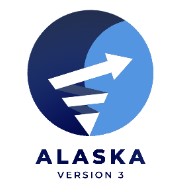The following commentary, “Alaska can’t slump its way to future success” by Frank Jeffries is posted here with permission, following publishing of his essay by the Anchorage Daily News on November 21, 2022. Mr. Jeffries’ essay is discussing the report, “Alaska’s Economic Performance in National Context” published last week by the UAA Center for Economic Development” and the article on the front page of the ADN regarding the CED report and Alaska’s stalled economy, “Stuck in a Rut“, by Alex DeMarban published November 18, 2022. (Some of these linked ADN articles maybe behind a paywall. Mr. Jeffries agreed to the reposting of his essay below in its original form to encourage more people who may not have an ADN subscription to explore this issue. We are hosting the article here with the hope that like our other guest articles, it will increase Alaskan interest and motivation to work on the question “What’s Next, Alaska?”, a theme of Alaska Version 3, and the discussion and action we are encouraging to accelerate development of our next “V3” economy. -Ky
OPINION: Alaska can’t slump its way to future success
It is time to hit the reset button on the state’s economy. The University of Alaska Center for Economic Development just produced a report regarding Alaska’s economic performance relative to the rest of the states and Washington, D.C. For the period from 2015-2021, Alaska ranked 50th out of 51 in GDP growth (-7.1%), employment growth (-8.4%) and unemployment (6.5%), as well as 51st out of 51 – dead last – in net migration (-8.8 per 1,000).
Change in GDP by sector for 2015-2021 showed that the largest decline was in natural resources (including oil and gas). Not surprisingly, the largest loss in employment was also in natural resources. The areas that showed gains were education and health services, the federal government, transportation and warehousing, retail, wholesale and utilities.
What is striking about this report is it can be used as a guide that the Legislature, Alaska Industrial Development and Export Authority, and the Anchorage Economic Development Corp. could use to inform them where to make investments in diversification of the state’s economy. As much as the extraction industries have added to the state’s bottom line over the years, relying on them for the indefinite future is not a sustainable strategy. BP pulled out and Shell decided offshore drilling in the Arctic isn’t such a great idea. The recent lease sales have attracted no major players, even though the Biden administration has offered more lease sales than the previous administration. While the extraction industries remain a significant contributor to state revenues, the data in the report makes it clear that diversification of the state’s economic drivers is necessary.
As much as the extraction industries have added to the state’s bottom line over the years, relying on them for the indefinite future is not a sustainable strategy.
The list of sectors that have real potential for growth listed in the report are leisure and hospitality, manufacturing, professional and business services, financial activities and information. This is good news! What COVID-19 did creating potential for real diversification of Alaska’s economy is to make ‘remote first’ work a reality. The state can take advantage of that by being a location for remote workers to enjoy a high standard of living and have an excellent quality of life. The economy of the United States turned the corner toward the service industries long ago. We are in an age of the knowledge-based economy. That is where the real growth is. Alaska is uniquely positioned to take advantage of this.
In the ADN Friday, Bill Popp, head of the Anchorage Economic Development Corp., said that an issue hindering economic recovery is the lack of available workers. With the second highest unemployment rate in the country that begs the question; is this a lack of available workers or is it a lack of available trained workers?
Alaska has a history of needing to import trained professionals instead of investing in homegrown workers to do the same jobs. It is past time to be making strategic investments in education and training for the youth of Alaska to fill these positions and to be anticipating future skill requirements for industries that the state can attract. An excellent K-12 and University system attracts people to the state as well. The current state of our K-12 system and University will not be a plus for people considering relocation here. We can control that and we should be making investments now to correct this situation.
A quick look at other areas of the country that had to pivot to new economic drivers (the Rust Belt, Raleigh-Durham, and others) shows that it was not a passive effort. These were intentional efforts driven by communities that were willing to invest in infrastructure and education to support the industries they wanted to attract. They hustled to recruit companies to relocate and they were successful. Truly, if you build it, they will come.
We have a new slate of legislators. What is yet to be seen is if they have the political will and vision to move Alaska ahead into the future. Or, are we going to keep doing the same things that got Alaska to the bottom of the rankings for the nation in every category but one?
Frank Jeffries is a professor emeritus of management at the University of Alaska Anchorage.
The views expressed here are the writer’s and are not necessarily endorsed by Alaska Version 3.


Recent Comments